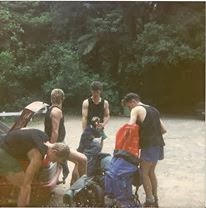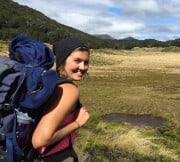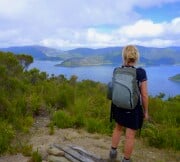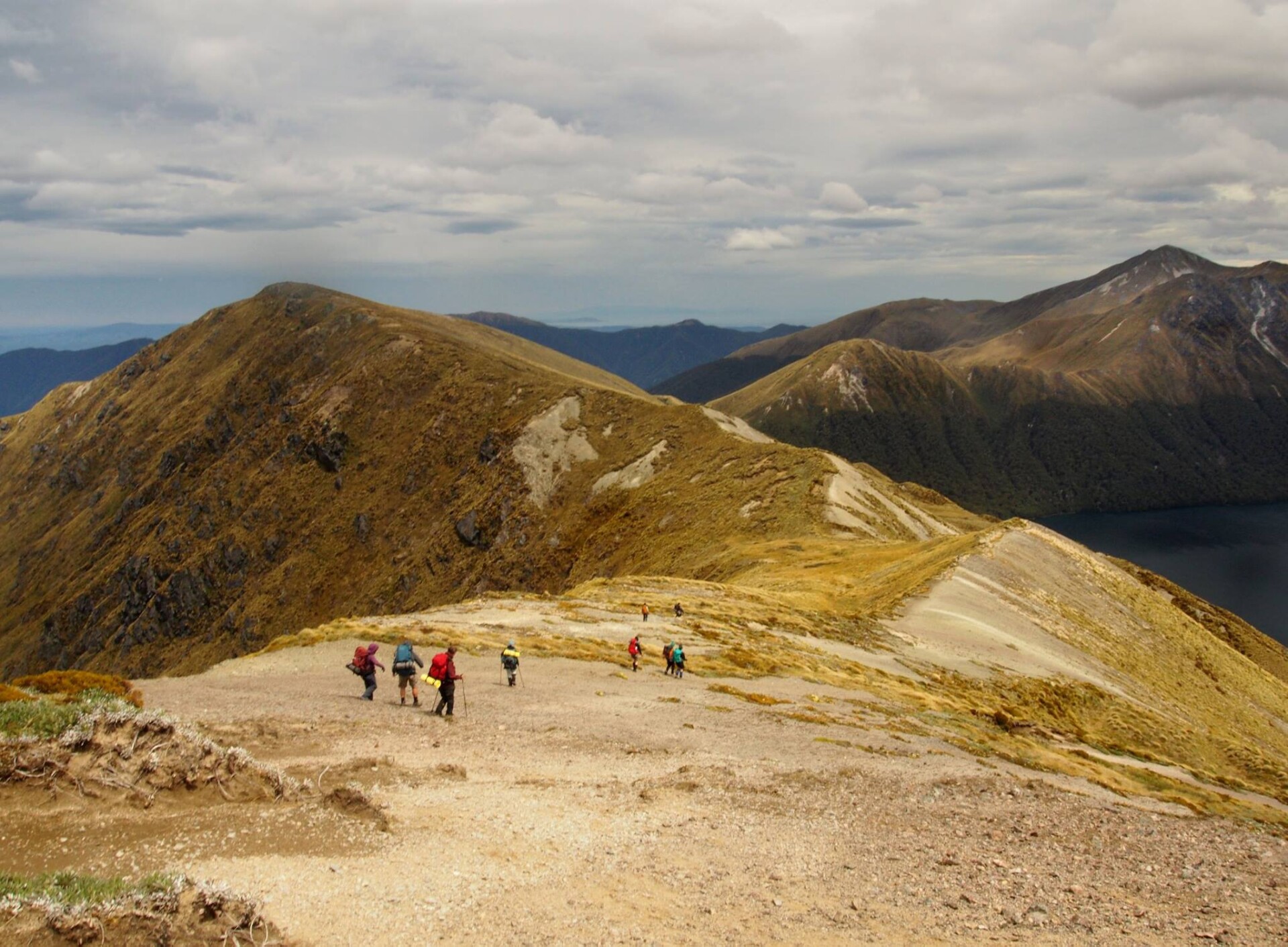
Multi-day hiking - its as simple as - food + clothes + pack + shoes or boots made for walking!
It's a high tech world we live in, there is a wonderful offering of gadgetry and gear available now to make our lives easier, safer and more interesting. But sometimes it can make the simplest pleasures in life seem not so simple anymore. One such simple pleasure that comes to mind is multiday hiking. Let's make no mistake heading off in to the hills for a few days hiking can be and should be a very simple and not to mention extremely rewarding thing to do.
If it is something you have not done before and are feeling bewildered by all the high tech and expensive clothing and equipment you've seen in the shops or the horror stories of the ill prepared that you have read about in the papers, don't worry people have been into hiking long before goretex, reflex, pertex, plb"s, gps's, etc were even invented and when someone talked about merino, they were talking about sheep and nothing else, it would have not been a reference to your layering system!
 |
| Hiking gear from the eighties, a lot like what sheep shearers used to wear! |
At this point I cannot help myself but retell the process I would go through as a budding hiker in my early to mid teens. When it came time to pack for a long weekend hike, the first place I went too was a box in the bottom of the hot water cupboard. In this box my father kept a collection of old clothes that he would delve into when he had some sheep to shear. Believe it or not there is a parallel between shearing sheep and hiking! Cotton's no good when you are sweating your proverbial off shearing sheep, it soaks up all that moisture (sweat) and clings to you and when the breeze rolls in the shed and the temperature drops you get cold and your back starts to ache, if it wasn't aching already from bending over sheep all day, and then there was grease boils too, but if I started talking about them I really would be digressing! So back to the box, everything in that box was made of wool.
There were black singlets that came halfway down my legs, (not because I was short, they are long to keep your back warm when bending over them sheep), moth eaten long johns, lambs wool jerseys, old swandris and the real favourite - saddle tweed trousers. I have searched opportunity shops in vain for these ever since. Those trousers were not particularly practical for hiking trips but they were very stylish and warm to put on at night. My point however is that when we went hiking, we wore old clothes (chances were we were going to get wet, dirty, maybe a little smelly), we wore wool not cotton because cotton does not keep you warm when it gets wet. Our raincoats were either yellow PVC, which were really waterproof and really uncomfortable or oilskin japara coats which were not as waterproof but more comfortable. Kitted out in this way we were equipped to deal with whatever nature could throw at us, and I guess it may have given our parents some peace of mind too when they dropped us off at those remote road ends and watched us romp off in to the wilds of the Ruahine and Tararua ranges. Or were they just relieved to have some peace and quiet for the weekend?
|
Packing up takes time and a bit of thought, those extra bits
|
Style was not really at the forefront of our minds, even if we did see anyone, chances are they would have been dressed in a similar fashion - this was the New Zealand back-country in 1980s!
Moving on from clothing and sheep, there is the question of footwear. There is no getting away from the fact that blisters suck! Choose footwear that you have broken in, this means you have already been for several walks of a few hours or more in terrain similar to what you will hike in. Think about the condition of the track you will be walking on, is it a well formed path, or is it more of a "route" that is likely to cross rivers, have loose rocky surfaces, mud etc. Don't worry too much about footwear being waterproof, waterproof linings often mean less breathability and they are only as waterproof as the water is deep! If it's your first hike, chance are you won't be doing anything to wild and a pair of running shoes with plenty of grip left on the soles will probably suffice. If you are worried about your ankles - strap them. If you are going into more rugged terrain, hiking off track on steep terrain then you will need something more substantial than a pair of trainers. Hiking boots or shoes will be necessary, plenty of grip and a bit of stiffness in the soles will make traversing those steep slopes a lot easier.
 |
|
Heading off on a multi day hike,
|
So by this time you have your footwear and your clothing sorted, you either raided the hot water cupboard box or have been down to the local salvation army store for an extra fleece or woolly jersey, you have not under estimated the importance of good waterproof jacket, if goretex is out of your price range, PVC coated nylon is the best bet. Then it's time for the pack. If you don't have one already you will need to hire, borrow or buy. Here is a couple of things to consider, weight, size, and fabric. There are more lightweight packs on the market now, and it's not a bad way to go if you are buying. A lightweight pack around 50 litres in capacity can weigh as little as 1kg, where as a 90 litre canvas pack will weigh over 3kgs. Those extra 2 kgs can get heavy towards the end of the day. For a overnighter (2 day) hike staying in a hut you can get away with a 50 litre pack, the 90 litre job is for the big trips of a week or more. Make sure the pack fits you to, check the harness size and make sure it is well matched to the length of your back
|
Arrived at the hut, a chance to spread your
|
Now lastly food, we are lucky these days in that we have so much choice for good quality, tasty food to take in to the back-country. There is no lamenting the good old days of the 1980's here when I remember the white bread and luncheon sausage, instant mashed spud and 2 minute noodles. If you want to make life easy grab a dehydrated back-country meal, all you will need to do is open the pouch and add hot (near boiling) water and let it soak! Do it yourself meals are cheaper though, when preparing your menu for the trip you want to consider the dry weight of the food carried vs energy output vs fuel required to cook. Eg pasta takes a lot more cooking time than cous cous for instance. And remember too you'll be burning lots of energy, so a bit of fat (like butter or oil is a good way to get a bit more energy value out of the food you carry. Chocolate is a life saver, just try not to eat it all on the first day, one seasoned tramper once told me they always wrap a chocolate bar in duct tape and keep it at the bottom of their pack - the duct tape hopefully being a deterrent to eating it unless it was an emergency!
 |
| Eating a well deserved meal, especially if you have carried it in! |
Think about joining a guided hiking tour. You will get to hike in some amazing locations, that you may not have got to yourself and not only will you learn lots about New Zealand's fascinating natural history and some handy bushcraft skills too. Also you will get to hike with a bunch of like minded people from all over the world and have heaps of fun and possibly make friends for life!










